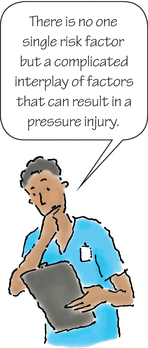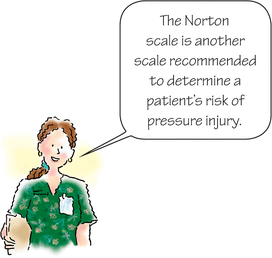|


Pressure injuries in bariatric patients
Bariatric patients are at increased risk for pressure injury development for several reasons:
- Their nutritional status might not be optimum.
- They're prone to developing protein malnutrition during metabolic stress (even though they may have excess body fat storage).
- Adipose tissue commonly has decreased vascularity.
- They may be unable to change position or move independently easily.
- The moist environment in skinfolds promotes bacterial growth, which can lead to fungal infections and decreased skin integrity.
Braden scale for predicting pressure sore risk
Tally the numbers for each subscale using the description that applies to your patient. Determine your patient's risk as follows:
- 15 to 18: At risk
- 13 to 14: Moderate risk
- 10 to 12: High risk
- 9 or below: Very high risk.
| ||||||||||||||||||||||||||||||||||||||||||||||||||||||||||||||||||||||||||||||||||||
Copyright 1988. Barbara Braden and Nancy Bergstrom. Reprinted with permission. All rights reserved. Permission to use this tool in clinical practice may be obtained, usually free of charge, at www.bradenscale.com.


When to assess and reassess
How frequently you assess and reassess your patient for pressure injury risk will depend on the care setting. The Agency for Healthcare Research and Quality and the Wound, Ostomy, and Continence Nurses Society recommend the following intervals:
- Acute care: Upon admission and then daily or when the patient's condition changes. Some critical care areas complete risk assessment every shift.
- Long-term care: Upon admission and then weekly for the first 4 weeks, then monthly or whenever the patient's condition changes.
- Home health care: Upon admission and at every nursing visit.
Take note Pressure injury documentationMost electronic health records have options that can be selected based on your patient assessment. Here are some criteria for pressure injury documentation that are included:
|
